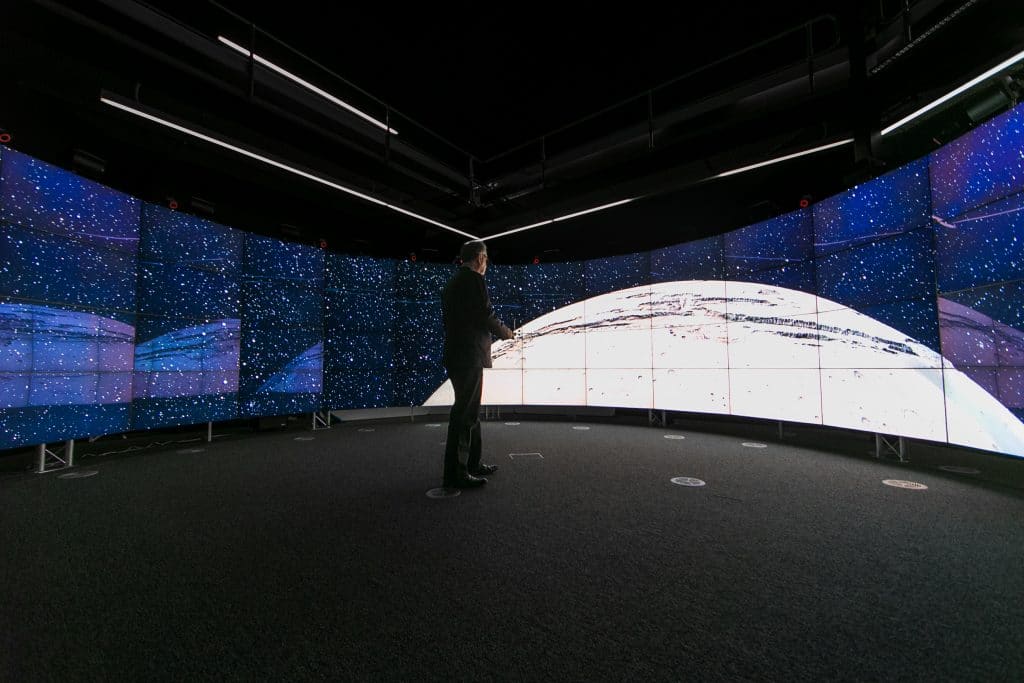Imagine 15 military engineers each armed with three or four drawings and CAD models of a new missile defense system. They come together in a conference room for a long, all-day session to critique new system designs. These engineers post information on sticky notes, charts, and graphs all around the room during these brainstorming sessions, in a process that ultimately could not succeed in fully capturing the vast amounts of data in the design review process. Prior to advanced visualization technologies, Raytheon—one of the largest military defense contractors in the United States—relied on this old method for collaboration.

With the goal of saving time, money, and resources throughout the product lifecycle, Raytheon and Mechdyne worked together to determine the best combination of collaboration and visualization technologies. From this discovery phase, Raytheon selected a CAVE2 and virtual reality enabling software to best streamline their process.
Merging screen space, real-time interactivity, and big data capabilities all into one advanced technology solution requires a deep understanding of the process and technology. An on-site Mechdyne expert supported Raytheon engineers for three months to transition over to the new audiovisual and software capabilities, helping them understand how the technology worked and could be used to its fullest potential.
As a result, engineers that previously met in conference rooms with sticky notes could now utilize the nearly 400-square foot space to break into groups, looking at drawings on the 4K resolution panel screens, and utilizing CAD drawings to document changes in real-time. Not only does this make collaboration more efficient and intuitive, it saves Raytheon millions of dollars in manufacturing costs; design revisions can be made in the virtual world before investing in tangible prototypes.
AeroDef 2018 will be featuring a Mixed Reality interactive experience, so you can see the technology in person.
